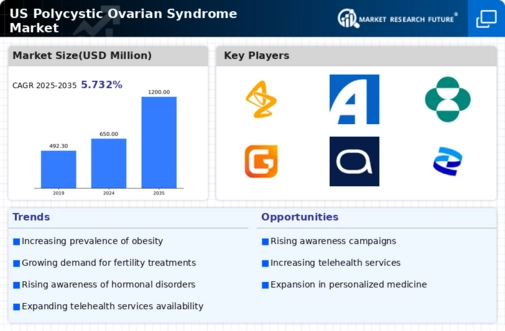US Polycystic Ovarian Syndrome Market Summary
The United States Polycystic Ovarian Syndrome market is projected to grow significantly from 650 USD Million in 2024 to 1200 USD Million by 2035.
Key Market Trends & Highlights
US Polycystic Ovarian Syndrome Key Trends and Highlights
- The market is expected to experience a compound annual growth rate of 5.73 percent from 2025 to 2035.
- By 2035, the market valuation is anticipated to reach 1200 USD Million, indicating robust growth potential.
- In 2024, the market is valued at 650 USD Million, reflecting the current demand for treatment and management options.
- Growing adoption of advanced diagnostic technologies due to increasing awareness of Polycystic Ovarian Syndrome is a major market driver.
Market Size & Forecast
| 2024 Market Size | 650 (USD Million) |
| 2035 Market Size | 1200 (USD Million) |
| CAGR (2025-2035) | 5.73% |
Major Players
Amgen, AstraZeneca, Horizon Therapeutics, Merck & Co, Eli Lilly and Company, GSK, AbbVie, Pfizer, Teva Pharmaceutical Industries, Sanofi, Mylan, Boehringer Ingelheim, Bristol Myers Squibb, Novartis, Bayer AG























Leave a Comment